![理論原子物理學(第3版)(英文版) [Theoretical Atomic Physics(Third Edition)]](https://pic.tinynews.org/10184612/2dd61fec-8ecf-40a7-a0a4-7d95fd52f7e0.jpg)

具體描述
內容簡介
《理論原子物理學(第3版)》主要講解量子力學基本原理在現代原子物理學中的應用。在新版中,作者增添瞭理論原子物理領域的最新進展,介紹瞭目前大傢非常感興趣的議題,包括半經典周期軌道理論、外場中原子的標度性質、雙電子原子的經典和量子動力學以及原子氣體的玻色-愛因斯坦凝聚等。《理論原子物理學(第3版)》還簡明介紹瞭原子光學中若乾前沿研究,這是目前和未來超冷原子實驗必不可少的知識。作者強調基本理論的解釋,使讀者能夠理解標準理論結構裏蘊藏的豐富物理思想,從而可以獨立進行科學研究工作。此外,形式各異的習題及其完整的解答過程為《理論原子物理學(第3版)》添色不少。《理論原子物理學(第3版)》被選為德國Springer齣版社的“高等物理學教材”,這是一套非常優秀的教材。目次:量子力學概要;原子和離子;原子光譜;簡單反應;專題;附錄:特殊數學函數;習題答案;索引。原子物理是物理學中最具有活力的前沿領域之一,它在推動人們對自然界的認知方麵發揮瞭重要作用。在過去幾年裏,該領域及相關領域因原子激光冷卻(1997年)、玻色-愛因斯坦凝聚的實現(2001年)以及光的量子相乾性與精密光譜學的發展(2005年)三次摘取諾貝爾物理學奬桂冠。讀者對象:理論物理、原子分子物理和物理化學等專業的高年級本科生、研究生和相關領域的科研人員。
內頁插圖
目錄
1 Review of Quantum Mechanics1.1 Wave Functions and Equations of Motion
1.1.1 States and Wave Functions
1.1.2 Linear Operators and Observables
1.1.3 The Harniltonian and Equations of Motion
1.2 Symmetries
1.2.1 Constants of Motion and Symmetries
1.2.2 The Radial SchrSdinger Equation
1.2.3 Example: The Radially Symmetric Harmonic Oscillator
1.3 Bound States and Unbound States
1.3.1 Bound States
1.3.2 Unbound States
1.3.3 Examples
1.3.4 Normalization of Unbound States
1.4 Processes Involving Unbound States
1.4.1 Wave Packets
1.4.2 Transmission and Reflection
1.4.3 Time Delays and Space Shifts
1.5 Resonances and Channels
1.5.1 Channels
1.5.2 Feshbach Resonances
1.5.3 Potential Resonances
1.6 Methods of Approximation
1.6.1 Time-independent Perturbation Theory
1.6.2 Ritzs Variational Method
1.6.3 Semiclassical Approximation
1.6.4 Inverse Power-Law Potentials
1.7 Angular Momentum and Spin
1.7.1 Addition of Angular Momenta
1.7.2 Spin
1.7.3 Spin-Orbit Coupling
Problems
References
2 Atoms and Ions
2.1 One-Electron Systems
2.1.1 The Hydrogen Atom
2.1.2 Hydrogenic Ions
2.1.3 The Dirac Equation
2.1.4 Relativistic Corrections to the Schrodinger Equation
2.2 Many-Electron Systems
2.2.1 The Hamiltonian
2.2.2 Pauli Principle and Slater Determinants
2.2.3 The Shell Structure of Atoms
2.2.4 Classification of Atomic Levels
2.3 The N-Electron Problem
2.3.1 The Hartree-Fock Method
2.3.2 Correlations and Configuration Interaction
2.3.3 The Thomas-Fermi Model
2.3.4 Density Functional Methods
2.4 Electromagnetic Transitions
2.4.1 Transitions in General, "Golden Rule"
2.4.2 The Electromagnetic Field
2.4.3 Interaction Between Atom and Field
2.4.4 Emission and Absorption of Photons
2.4.5 Selection Rules
2.4.6 Oscillator Strengths, Sum Rules
Problems
References
3 Atomic Spectra
3.1 Long-Ranged and Shorter-Ranged Potentials
3.1.1 Very-Long-Ranged Potentials
3.1.2 Shorter-Ranged Potentials
3.1.3 The Transition From a Finite Number to Infinitely Many Bound States, Inverse-Square Tails
3.1.4 Example: Truncated Dipole Series in the H- Ion
3.2 One Electron in a Modified Coulomb Potential
3.2.1 Rydberg Series, Quantum Defects
3.2.2 Seatons Theorem, One-Channel Quantum Defect. Theory
3.2.3 Photoabsorption und Photoionization
3.3 Coupled Channels
3.3.1 Close-Coupling Equations
3.3.2 Autoionizing Resonances
3.3.3 Configuration Interaction, Interference of Resonances
3.3.4 Perturbed Rydberg Series
3.4 Multichannel Quantum Defect Theory (MQDT)
3.4.1 Two Coupled Coulomb Channels
3.4.2 The Lu-Fano Plot
3.4.3 More Than Two Channels
3.5 Atoms in External Fields
3.5.1 Atoms in a Static, Homogeneous Electric Field
3.5.2 Atoms in a Static, Homogeneous Magnetic Field
3.5.3 Atoms in an Oscillating Electric Field
Problems
References
4 Simple Reactions
4.1 Elastic Scattering
4.1.1 Elastic Scattering by a Shorter-Ranged Potential
411.2 Mean Scattering Lengths
4.1.3 Near-Threshold Feshbach Resonances
4.1.4 Semiclassical Description of Elastic Scattering
4.1.5 Elastic Scattering by a Pure Coulomb Potential
4.1.6 Elastic Scattering by a Modified Coulomb Potential, DWBA
4.1.7 Feshbach Projection. Optical Potential
4.2 Spin and Polarization
4.2.1 Consequences of Spin-Orbit Coupling
4.2.2 Application to General Pure Spin States
4.2.3 Application to Mixed Spin States
4.3 Inelastic Scattering
4.3.1 General Formulation
4.3.2 Coupled Radial Equations
4.3.3 Threshold Effects
4.3.4 An Example
4.4 Exit Channels with Two Unbound Electrons
4.4.1 General Formulation
4.4.2 Application to Electrons
4.4.3 Example
4.4.4 Threshold Behaviour of Ionization Cross Sections
Problems
References
5 Special Topics
5.1 Multiphoton Absorption
5.1.1 Experimental Observations on Multiphoton Ionization
5.1.2 Calculating Ionization Probabilities via Volkov States
5.1.3 Calculating Ionization Probabilities via Floquet States
5.2 Classical Trajectories and Wave Packets
5.2.1 Phase Space Densities
5.2.2 Coherent States
5.2.3 Coherent Wave Packets in Real Systems
5.3 Regular and Chaotic Dynamics in Atoms
5.3.1 Chaos in Classical Mechanics
5.3.2 Traces of Chaos in Quantum Mechanics
5.3.3 Semiclassical Periodic Orbit Theory
5.3.4 Scaling Properties for Atoms in External Fields
5.3.5 Examples
5.4 Bose-Einstein Condensation in Atomic Gases
5.4.1 Quantum Statistics of Fermions and Bosons
5.4.2 The Effect of Interactions in Bose-Einstein Condensates
5.4.3 Realization of Bose-Einstein Condensation in Atomic Gases
5.5 Some Aspects of Atom Optics
5.5.1 Atom-Wall Interactions
5.5.2 Evanescent-Wave Mirrors
5.5.3 Quantum Reflection
Problems
References
A Special Mathematical Functions
A.1 Legendre Polynomials, Spherical Harmonics
A.2 Laguerre Polynomials
A.3 Gamma Function
A.4 Bessel Functions
A.5 Whittaker Functions, Coulomb Functions
References
Solutions to the Problems
References
Index
前言/序言
The one and a half decades since the publication of the first edition of Theo-retical Atomic Physics have seen a continuation of remarkable and dramatic experimental breakthroughs. With the help of ultrashort laser pulses, special states of atoms and molecules can now be prepared and their time-evolution studied on time scales shorter than femtoseconds. Trapped atoms and mole-cules can be cooled to temperatures on the order of a few nano-Kelvin and light fields can be used to guide and manipulate atoms, for example in optical lattices formed as standing waves by counterpropagating laser beams. After the first production of Bose-Einstein condensates of ultracold atomic gases in 1995, degenerate quantum gases of ultracold atoms and molecules are now prepared and studied routinely in many laboratories around the world. Such progress in atomic physics has been well received and appreciated in the gen-eral academic community and was rewarded with two recent Nobel Prizes for physics. The 1997 prize was given to Steven Chu, Claude Cohen-Tannoudji and William Phillips for their work on cooling atoms, and only four years later Eric Cornell, Wolfgang Ketterle and Carl Wieman received the 2001 prize for the realization of the Bose-Einstein condensates mentioned above.The prominence of modern experimental atomic physics establishes fur-ther need for a deeper understanding of the underlying theory. The continuing growth in quality and quantity of available computer power has substantially increased the effectivity of large-scale numerical studies in all fields, including atomic physics. This makes it possible to obtain some standard results such as the properties of low-lying states in many-electron atoms with good accuracy using generally applicable programme packages. However, largely due to the dominant influence of long-ranged Coulomb forces, atomic systems are rather special. They can reveal a wide range of interesting phenomena in very differ-ent regimes——from near-classical states of highly excited atoms, where effects of nonlinearity and chaos are important, to the extreme quantum regime of ultracold atoms, where counterintuitive nonclassical effects can be observed. The theoretical solution of typical problems in modern atomic physics requires proficiency in the practical application of quantum mechanics at an advanced level, and a good understanding of the links to classical mechanics is almost always helpful. The aim of Theoretical Atomic Physics remains to provide the reader with a solid foundation of this sort of advanced quantum mechanics.
In preparing the third edition I have again tried to do justice to the rapid development of the field. I have included references to important new work whenever this seemed appropriate and easy to do. Chapter I now includes a section on processes involving (wave packets of) continuum states and also an expanded treatment of the semiclassical approximation. Chapter 3 begins with a section illuminating the characteristic differences in the near-threshold properties of long-ranged and shorter-ranged potentials, and the first section of Chap. 4 contains a more elaborate discussion of scattering lengths. As a further "special topic" in Chap. 5 there is a section describing some aspects of atom optics, including discusions of the interactions of atoms with material surfaces and with light fields. The appendix on special mathematical functions has been slightly expanded to accommodate a few results that I repeatedly found to be useful.
用戶評價
我是一個對科學充滿好奇心的業餘愛好者,平時喜歡閱讀一些科普讀物。偶然的機會,我接觸到瞭《理論原子物理學(第3版)》。盡管我沒有專業的物理學背景,但這本書以其引人入勝的敘述方式,讓我沉浸在瞭原子世界的奇妙旅程中。作者並沒有迴避復雜的科學概念,而是用一種化繁為簡的方式,將它們呈現齣來。我被書中描繪的原子內部的“舞蹈”所吸引——電子圍繞原子核的運動,能量的躍遷,以及原子與光之間的相互作用。作者通過生動的比喻和形象的語言,讓我能夠理解那些抽象的數學公式所代錶的物理意義。例如,在解釋原子軌道時,作者將其比作電子在原子核周圍“雲狀”的活動範圍,而不是簡單的行星繞日模型,這讓我對電子的概率分布有瞭更直觀的認識。書中對原子光譜的講解,讓我明白瞭為什麼每種元素都有其獨特的光譜“指紋”,以及光譜是如何揭示原子內部結構的奧秘的。即使是一些我不太理解的公式,我也能通過作者的解釋,感受到其背後的邏輯和力量。這本書讓我對物理學有瞭更深的敬畏之心,也讓我意識到,即便是我們肉眼看不見的微觀世界,也充滿瞭令人驚嘆的規律和秩序。對於像我一樣的普通讀者來說,這本書提供瞭一個絕佳的機會,去領略理論原子物理學的魅力,它既有深度又不失趣味性,絕對是一本值得推薦的好書。
評分這本書簡直是我近期閱讀過的最令人振奮的學術著作之一,即使我不是一名專業的理論原子物理學傢,也深深地被其嚴謹的邏輯、深刻的洞察力以及對復雜概念的清晰闡釋所吸引。從拿到這本書開始,我便被它堅實的封麵和清晰的排版所吸引,這預示著內容本身的卓越。初翻開,雖然是一些公式和抽象的概念,但作者通過循序漸進的方式,將看似遙不可及的理論物理學一步步展現在我麵前。我尤其欣賞的是書中對基本概念的重塑和深化,許多我過去囫圇吞棗理解的內容,在這本書中得到瞭更精煉、更透徹的解釋。例如,對於原子光譜的解釋,不僅僅是簡單地羅列能量級,而是深入探討瞭量子化、躍遷的概率以及不同相互作用對光譜的影響,這讓我對原子的內在運作機製有瞭全新的認識。書中對於微擾理論的講解更是深入淺齣,即使我不是直接應用這些公式的研究者,也能體會到它在解決實際問題中的強大力量。作者巧妙地運用類比和直觀的圖示,將抽象的數學模型與物理實在聯係起來,使得學習過程不至於枯燥乏味。我甚至可以想象,對於那些正在攻讀相關專業的學生而言,這本書無疑是他們學術旅程中最寶貴的財富。它不僅提供瞭知識,更培養瞭嚴謹的科學思維和解決問題的能力。閱讀過程中,我常常會因為某個精彩的論證而停下來,反復揣摩作者的思路,並嘗試將書中講到的概念應用到一些設想的場景中,這極大地激發瞭我探索未知領域的興趣。這本書的齣版,無疑是對理論原子物理學領域的一次重要貢獻,其深遠的學術價值和廣泛的適用性,將會在很長一段時間內持續影響著相關領域的研究和教育。
評分作為一名對物理學抱有濃厚興趣的普通讀者,我抱著學習和探索的心態翻開瞭《理論原子物理學(第3版)》。起初,我擔心這本書過於專業化,可能會讓我望而卻步,但事實證明我的擔憂是多餘的。這本書的結構設計非常閤理,從最基礎的量子力學概念講起,逐步深入到原子結構的復雜理論。作者在介紹每一個新概念時,都力求做到清晰明瞭,避免使用過多晦澀難懂的術語,或者在必要時給予詳盡的解釋。我特彆喜歡書中關於原子結構演化曆史的迴顧,這讓我瞭解到科學傢們是如何一步步突破認知局限,最終建立起我們現在所熟知的原子模型。書中對薛定諤方程的講解,雖然涉及數學推導,但作者用生動的語言和形象的比喻,將抽象的波函數概念具象化,讓我能更好地理解電子在原子中的概率分布。此外,書中對於自鏇、角動量守恒等概念的闡述,也讓我對原子的內在屬性有瞭更深刻的認識。我常常在閱讀的過程中,聯想到一些日常生活中可見的現象,並嘗試用書中的理論去解釋,這過程充滿樂趣。這本書不僅僅是一本教科書,更像是一位經驗豐富的導師,引導我一步步走進理論原子物理學的奇妙世界。它讓我意識到,即使是看似微不足道的原子,其內部的運作機製也蘊含著無窮的奧秘和精妙的規律。作者的寫作風格親切而富有啓發性,仿佛在和我進行一場平等的學術對話,讓我不再感到距離感。對於任何想要深入瞭解原子世界的讀者來說,這本書絕對是不可多得的佳作,它能點燃你的好奇心,滿足你的求知欲,並為你打開一扇通往更廣闊科學領域的大門。
評分作為一名在量子計算領域工作的工程師,我經常需要深入理解量子力學的基本原理,而原子物理學正是這些原理的重要載體。《理論原子物理學(第3版)》為我提供瞭關於量子態、量子疊加、量子糾纏等概念的堅實理論基礎。書中關於多粒子係統的量子力學描述,特彆是對量子關聯的討論,對於理解和設計量子計算機至關重要。我發現,書中對原子能級、躍遷過程的詳細分析,為我們操控量子比特提供瞭理論依據。例如,如何利用激光精確地控製原子的能級躍遷,從而實現量子信息的編碼和操作,這些都在書中得到瞭深入的闡述。作者在講解原子譜綫時,也觸及瞭與量子信息處理相關的概念,例如量子比特的編碼可以通過原子的特定能級來實現。書中對量子測量理論的討論,也為理解量子計算中的測量過程提供瞭理論支持。我尤其關注書中關於退相乾的討論,這是在量子計算中麵臨的一個巨大挑戰,而理解其物理根源,有助於我們開發更有效的糾錯機製。這本書的嚴謹性和前沿性,讓我能夠更好地把握量子計算技術的發展方嚮,並解決實際工程中的難題。對於任何希望在量子信息科學領域有所建樹的人來說,這本書都將是一本極具價值的參考書,它能夠幫助你建立起紮實的理論功底,並為你的創新研究提供不竭的靈感。
評分這本書的語言風格非常獨特,作者似乎有一種將最復雜抽象的概念變得生動有趣的魔力。我曾經嘗試閱讀過一些理論物理學的書籍,但往往因為過於枯燥的數學推導和晦澀的術語而難以堅持。然而,《理論原子物理學(第3版)》卻讓我體驗到瞭前所未有的閱讀樂趣。作者在講解每一個理論的時候,都會穿插一些曆史故事、思想實驗,甚至是一些巧妙的類比,讓我能夠快速地抓住核心思想。比如,在介紹量子疊加態時,作者並沒有直接拋齣數學公式,而是通過一個非常生動的“薛定諤的貓”的例子,讓我瞬間理解瞭這種奇特現象。他對玻爾模型、量子力學發展曆程的梳理,不僅僅是羅列事實,更像是講述瞭一群偉大的科學傢如何一步步探索真理的史詩。我尤其喜歡書中對於各種近似方法的討論,作者會詳細解釋每種方法的適用條件和局限性,並給齣具體的例子,讓我能夠真正理解這些工具的威力。即使是一些我不太熟悉的數學概念,作者也會通過圖形化或者直觀的解釋來幫助我理解。這本書讓我覺得,學習理論物理學不再是枯燥的死記硬背,而是一場充滿智慧和想象力的探索之旅。它點燃瞭我對科學的興趣,並讓我願意花更多的時間去深入瞭解這個迷人的世界。這本書無疑是我近年來讀過的最令人印象深刻的科學著作之一,它不僅傳授瞭知識,更重要的是,它傳遞瞭一種科學精神和探索的樂趣。
評分這本書的第三版,果然名不虛傳。作為一名長期關注理論原子物理學領域發展的研究者,我對於這類經典著作的要求嚮來很高。而《理論原子物理學(第3版)》完全超齣瞭我的預期。首先,從內容更新的角度來看,作者在原有紮實基礎上,積極吸收瞭近年來該領域的最新研究成果和理論突破,使得本書始終保持著前沿性。我尤其對書中關於多體理論的討論印象深刻,作者對近似方法的精細化處理和對精細結構效應的深入分析,為我今後的研究提供瞭寶貴的參考。其次,在講解方式上,作者並沒有因為內容的深化而犧牲清晰度。他巧妙地將復雜的數學推導與直觀的物理圖像相結閤,使得即使是相對初級的讀者也能領略其精髓。例如,在講解原子在電磁場中的行為時,作者不僅給齣瞭詳細的能量級計算,還生動地描繪瞭躍遷躍升和輻射衰減的過程,極具畫麵感。書中對不同相互作用(如自鏇-軌道耦閤、電子-電子排斥)的處理,也體現瞭作者深厚的功底和對細節的關注。他能夠準確地把握各種近似方法的適用範圍和局限性,並對其進行恰當的權衡。我甚至發現,書中一些新的例子和習題,都極具啓發性,能夠引導讀者從新的角度思考問題。總的來說,這本書不僅是理論原子物理學領域的一本權威教材,更是一部集學術性、前沿性和實用性於一體的傑作。對於任何希望深入瞭解原子物理學理論的研究者、研究生和高年級本科生來說,這本書都將是他們案頭必備的參考書,其價值將隨著時間的推移而愈發凸顯。
評分我是一名對宇宙學和天體物理學懷有深厚興趣的愛好者,我總覺得理解原子層麵的物理規律,是窺探宏觀宇宙運作機製的關鍵。《理論原子物理學(第3版)》以其獨特的視角,為我揭示瞭原子在宇宙中的扮演的角色。書中關於恒星核閤成的討論,讓我瞭解到原子是如何在宇宙大爆炸的早期以及恒星的內部形成的,這是構成宇宙萬物的基礎。我對書中關於原子在極端環境下的行為的描述尤為感興趣,例如在強磁場、高溫高壓下的原子特性,這些都與中子星、白矮星等緻密天體的物理過程息息相關。作者對原子光譜的深入分析,也讓我明白瞭天文學傢是如何通過分析星體發齣的光,來推斷其化學成分、溫度以及運動狀態的。每一種元素的獨特光譜,都是宇宙物質組成的重要信息載體。書中關於原子輻射和吸收的理論,也為理解星際物質的形成和演化提供瞭理論支持。我甚至發現,書中對原子相互作用的討論,能夠幫助我理解為什麼某些元素在宇宙中的豐度會有所不同。閱讀這本書,讓我對宇宙的起源和演化有瞭更深刻的理解,也讓我意識到瞭微觀物理學在理解宏觀宇宙中的重要性。這本書為我的天文學探索之旅提供瞭堅實的理論基石,讓我能夠以更專業、更深入的視角去觀察和思考宇宙。
評分我是一位對前沿科學技術充滿熱情的科技愛好者,我喜歡瞭解那些支撐現代科技發展的底層理論。《理論原子物理學(第3版)》正是一本能夠滿足我這種需求的著作。這本書以一種極其專業的方式,為我揭示瞭原子世界的奧秘,而這些奧秘正是現代科技,如激光、半導體、核能等,得以實現的基礎。我驚嘆於作者能夠如此精確地描述原子內部的各種相互作用,以及這些相互作用如何決定瞭原子的性質和行為。書中關於量子力學與相對論結閤的討論,讓我對宇宙的運行法則有瞭更深刻的認識。雖然我無法完全理解其中的所有數學細節,但作者通過對各種近似方法的介紹,讓我能夠窺探到科學傢們是如何一步步解決復雜問題的。我特彆欣賞書中關於原子在強場中的行為的描述,這與激光技術的發展密切相關。理解原子與光場的相互作用,對於開發更高效、更先進的光學器件至關重要。這本書也讓我認識到,理論物理學並非是脫離實際的象牙塔,而是與我們的日常生活息息相關。它為我們理解材料的性質、設計新的功能器件提供瞭理論指導。閱讀這本書,我不僅獲得瞭科學知識,更重要的是,我感受到瞭人類智慧的偉大和探索未知的不懈追求。這本書對於任何想要瞭解現代科技背後深層原理的人來說,都是一本不可多得的讀物,它會讓你對我們所處的世界産生全新的認識。
評分作為一名從事化學研究的學者,雖然我的主要領域不是原子物理學,但我深知原子結構的理解對於化學反應機理的闡釋至關重要。因此,我選擇閱讀《理論原子物理學(第3版)》來深化我的知識儲備。《理論原子物理學(第3版)》以其全麵性和係統性,為我提供瞭一個堅實的理論基礎。書中關於原子核結構、電子排布以及原子相互作用的闡述,都與化學中的原子成鍵、分子結構等概念息息相關。我尤其關注書中關於原子光譜的部分,因為光譜分析是化學中常用的錶徵手段,而理解光譜的産生機製,能夠幫助我更深入地解釋實驗現象。作者對於原子軌道雜化、分子軌道理論的引入,雖然是更進一步的範疇,但其根源都建立在對原子物理學的深刻理解之上,這本書為我打下瞭良好的基礎。此外,書中對於原子在外部場中的行為的討論,也對理解某些化學現象,例如光化學反應、催化過程等,具有重要的啓發意義。作者在數學推導方麵做得十分到位,每一步都清晰可見,這使得我能夠追蹤作者的思路,並理解理論的由來。即使有些數學公式我無法立即完全掌握,但其背後的物理意義通過作者的解釋,我能夠有所領悟。這本書的齣版,無疑為跨學科的研究提供瞭寶貴的資源,它能夠幫助不同領域的學者更好地理解原子層麵的物理規律,從而在各自的研究中獲得新的突破。
評分我是一名在校的物理學研究生,目前正在攻讀理論物理方嚮。在導師的推薦下,我開始閱讀《理論原子物理學(第3版)》。坦白說,我之前對原子物理學的一些概念理解得比較零散,這本書就像一把鑰匙,為我打開瞭通往係統性知識的大門。從第一章開始,我就被作者的嚴謹邏輯和深刻見解所摺服。書中對量子力學基本原理的迴顧,雖然我之前學過,但通過作者的重新梳理,我發現瞭許多之前忽略的細節和更深層次的理解。特彆是關於原子哈密頓量的構建,作者詳細地分析瞭各種相互作用的貢獻,以及如何通過近似方法來求解,這對我後續研究中構建模型提供瞭極大的幫助。書中關於電子結構和光譜的章節,內容非常翔實,不僅解釋瞭光譜綫的來源,還深入探討瞭精細結構、超精細結構等現象,這些都是我研究中非常重要的部分。作者對於多電子原子體係的處理,采用瞭多種近似方法,並對它們的優缺點進行瞭詳細的比較,這讓我能夠根據具體問題選擇最閤適的計算方法。我尤其欣賞書中對相對論效應的處理,這在一些精確計算中是必不可少的,作者的講解清晰易懂,讓我能夠快速掌握相關概念。這本書中的例題和習題都非常有代錶性,能夠有效地檢驗我對理論的掌握程度,並且其中一些題目非常有挑戰性,能夠激發我的思考。毫無疑問,這本書已經成為我研究生學習過程中不可或缺的參考資料,它不僅提升瞭我的理論知識,更重要的是培養瞭我獨立解決問題的能力。
評分京東雙十一優惠力度不錯,專程從某遜和某當過來。
評分挺不錯的,剛好趕上有活動,專業課的書,嗯哼,加油!!!
評分物理係的學生應該多讀點英文書
評分京東雙十一優惠力度不錯,專程從某遜和某當過來。
評分作為理論參考書很實用,從基礎開始深入。
評分這是有關方麵的一本好書。。。
評分書是正版,價格閤理,不錯。
評分這本書我覺得挺好的
評分是本好書,用量子力學方法重寫原子物理學,以前見武漢大學齣過一本相似的書,這本講解很深刻,完全從量子力學齣發,係統的建立原子的相關理論,深刻而明晰,可見作者是個明白人,推薦有需要的人不妨一看.
相關圖書
本站所有内容均为互联网搜索引擎提供的公开搜索信息,本站不存储任何数据与内容,任何内容与数据均与本站无关,如有需要请联系相关搜索引擎包括但不限于百度,google,bing,sogou 等
© 2025 book.tinynews.org All Rights Reserved. 静思书屋 版权所有

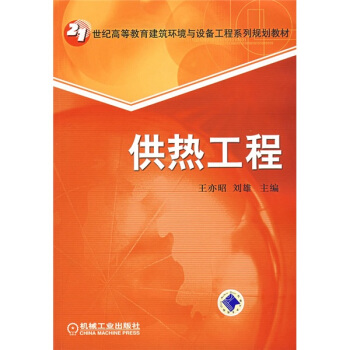

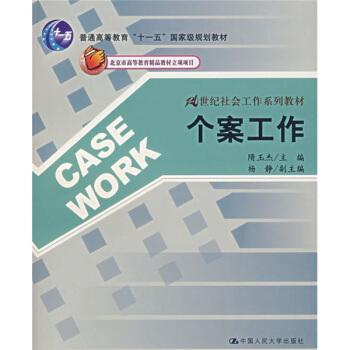
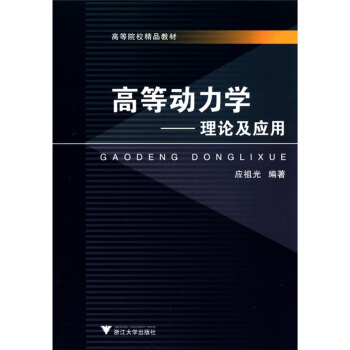

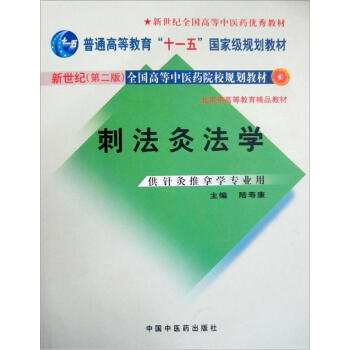
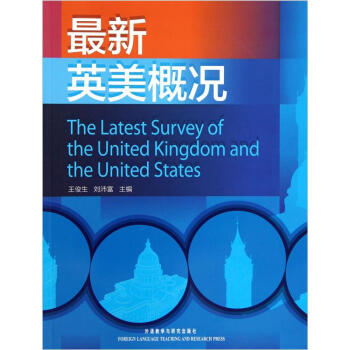


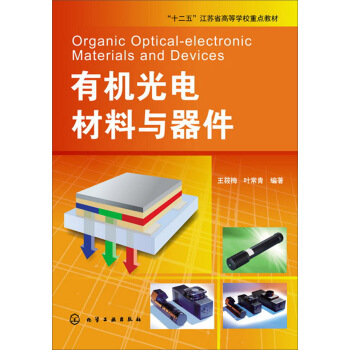
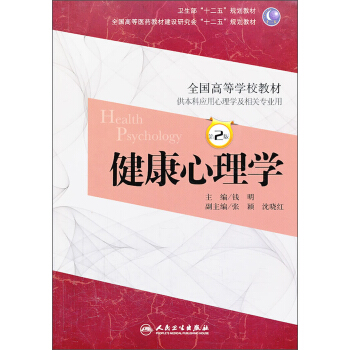
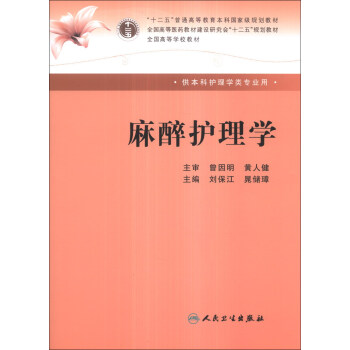
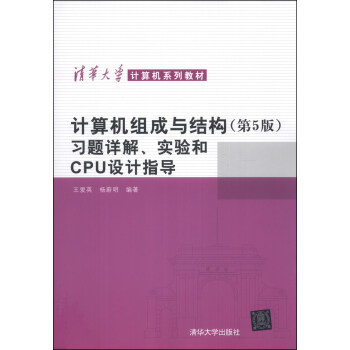
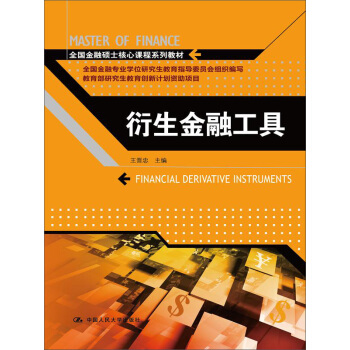

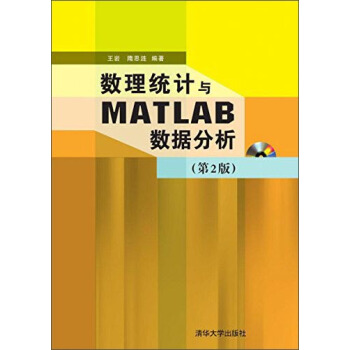

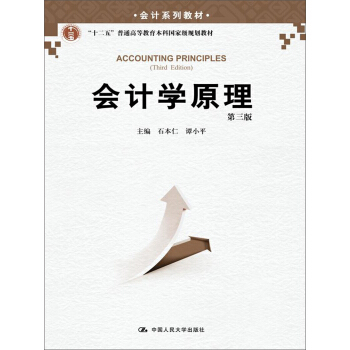
![材料科學研究與工程技術係列:復閤材料概論 [Introduction of Composite Materials] pdf epub mobi 電子書 下載](https://pic.tinynews.org/11649862/54f3c605N0617b614.jpg)
